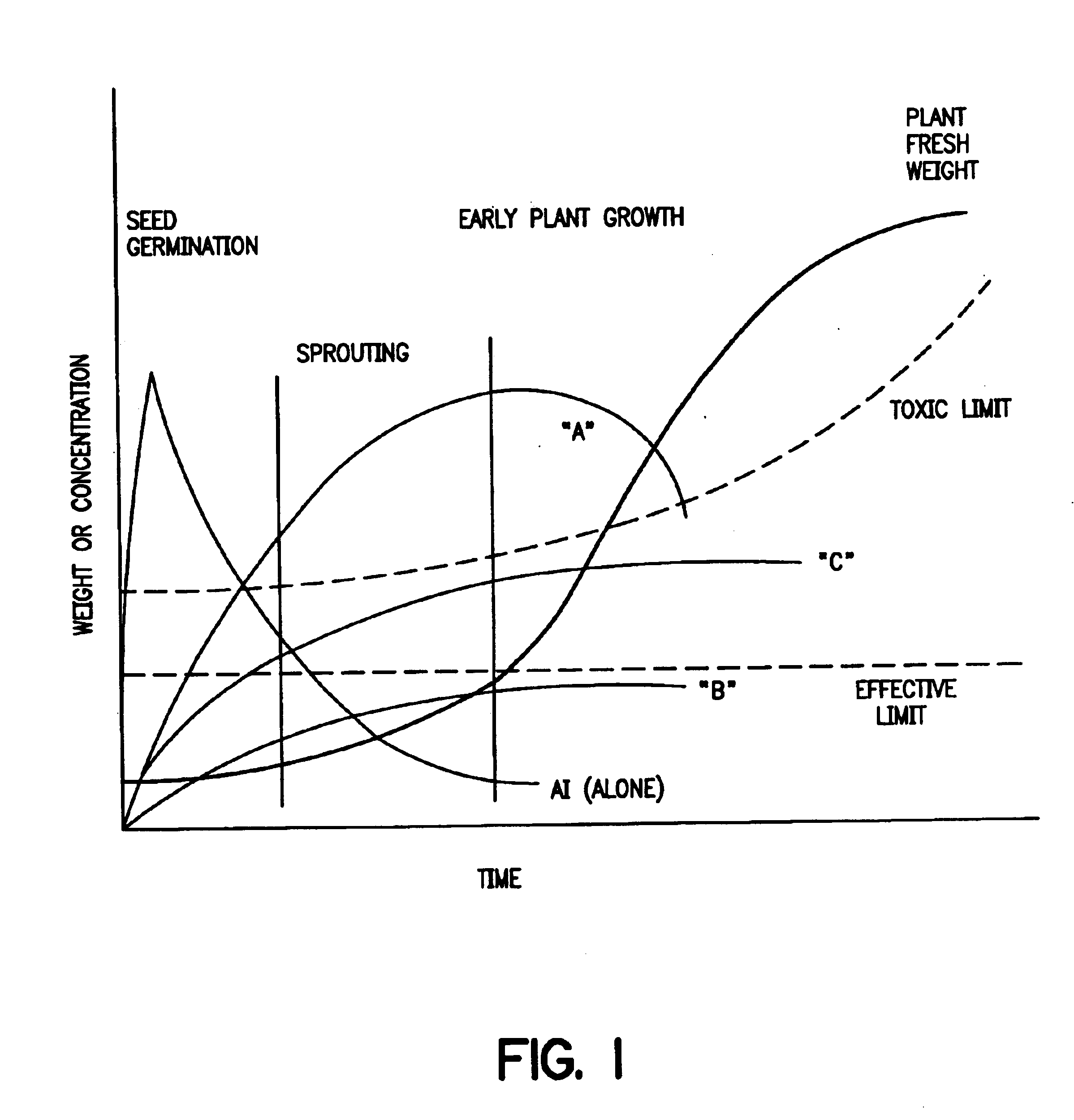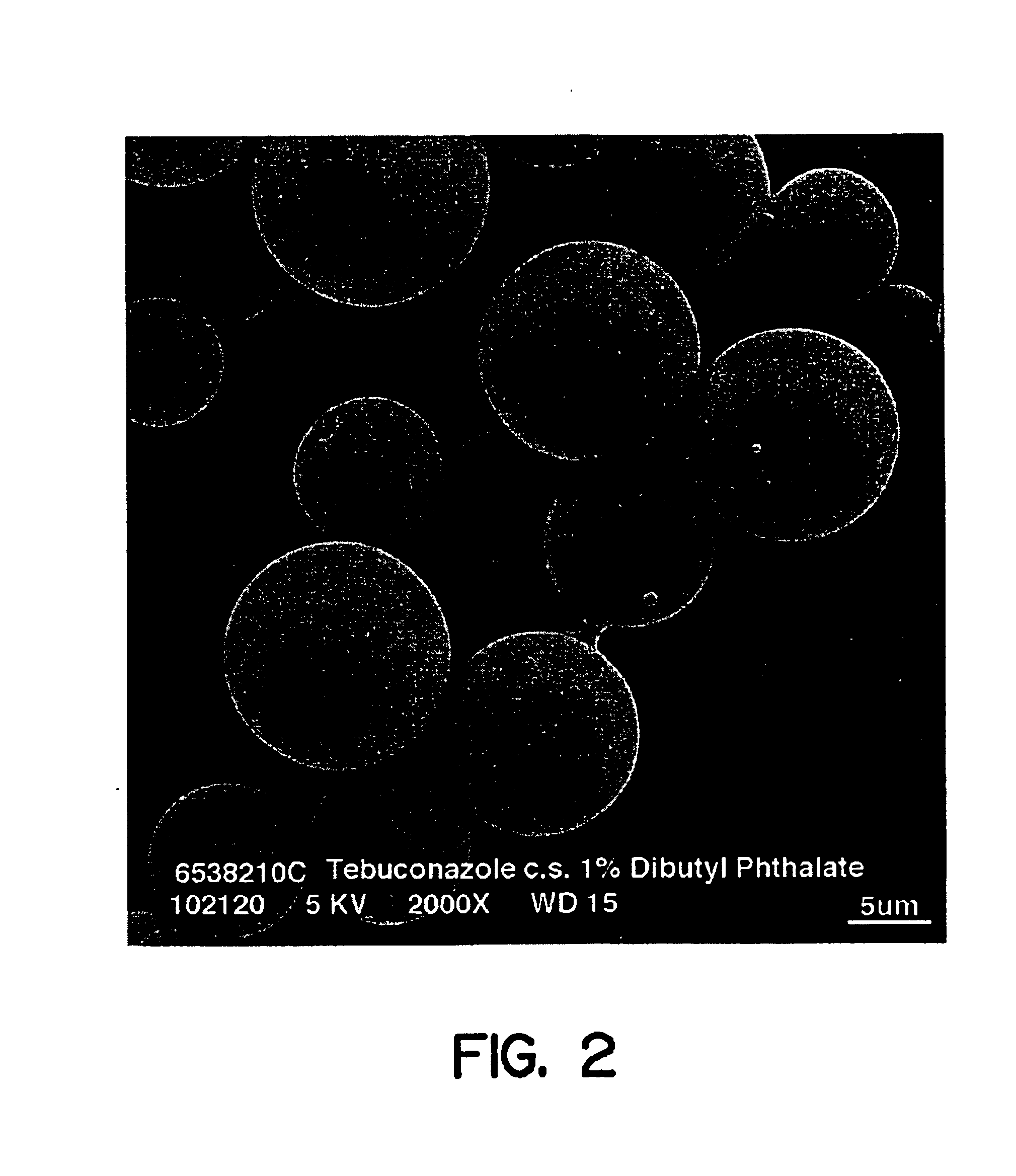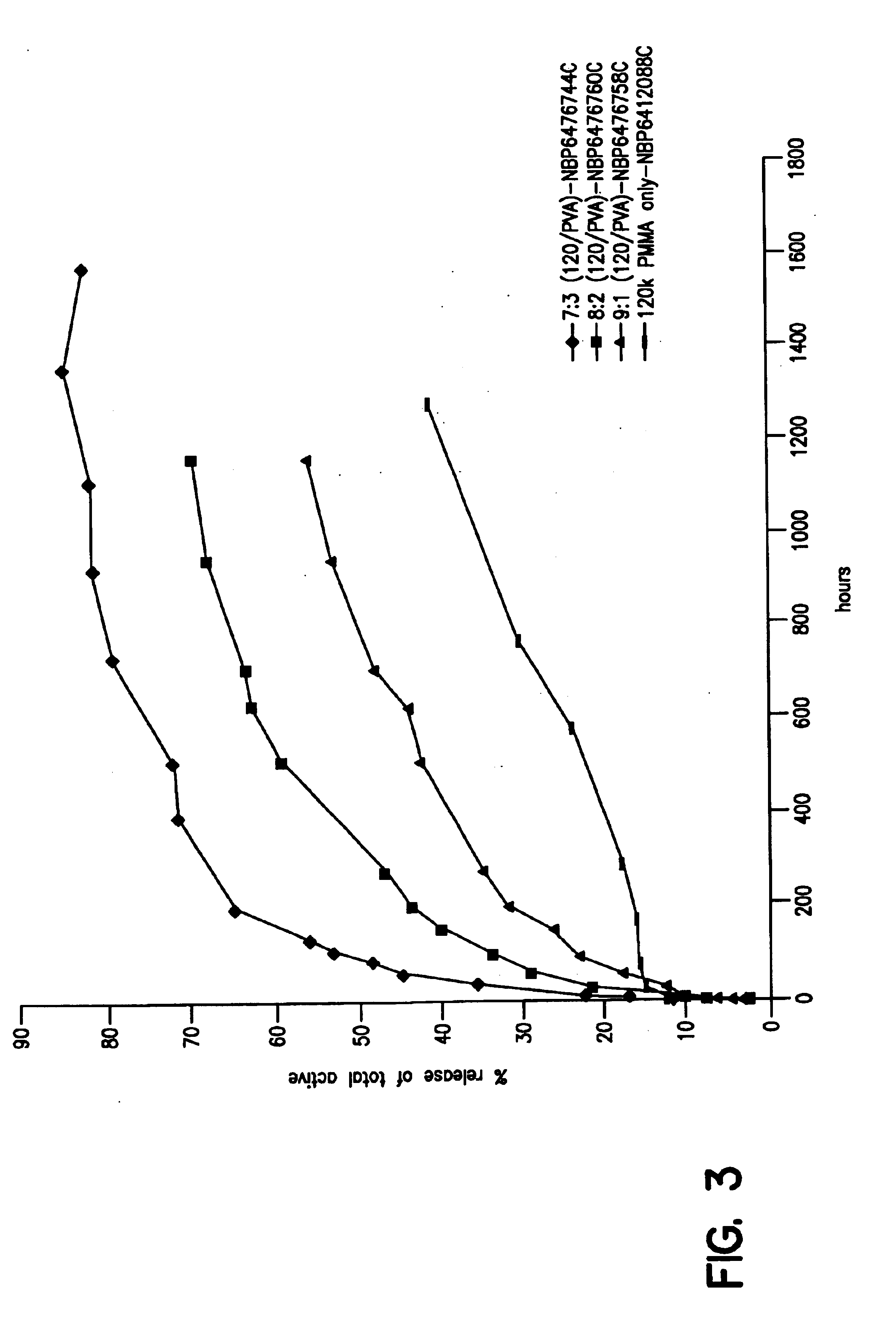Controlled release formulations and methods for their production and use
a technology of active ingredients and formulations, which is applied in the direction of heterocyclic compound active ingredients, biocide, dead animal preservation, etc., can solve the problems of inefficient use, inefficient targeting of pesticides, and unacceptable exposure of farmers, applicators, and nearby residents to pesticides, and achieve low level of readily extractable active ingredients
- Summary
- Abstract
- Description
- Claims
- Application Information
AI Technical Summary
Benefits of technology
Problems solved by technology
Method used
Image
Examples
example 1
This example illustrates the preparation of controlled release formulations having tebuconazole as the active ingredient with poly(methyl methacrylate) and phthalic anhydride as the matrix polymer and matrix polymer plasticizer, respectively.
Hydroxypropyl cellulose (1.08 g, METHOCEL A15LV, available from Dow Chemical Co.) was added to water (82.81 g) in a 400 ml beaker with mild stirring and the aqueous solution was cooled in an ice bath to about 4° C. In a separate beaker an organic solution was prepared that contained tebuconazole (6.44 g, of any commercial grade and supplier), phthalic anhydride (2.87 g, Aldrich Cat. No. 04905), and poly(methyl methacrylate) (6.8 g, 350,000 weight average molecular weight, available from Aldrich) in 93.50 g of methylene chloride. The organic solution was stirred at room temperature until all of the solid ingredients were in solutions.
The organic solution was then poured into the aqueous solution over a period of about 30 sec. while the mixture wa...
example 2
This illustrates the preparation of the controlled release formulation with tebuconazole at several loading levels and with the use several different matrix polymers and matrix polymer plasticizers.
Microparticles of the subject controlled release formulation were prepared by the same method as described in Example 1, except that PMMA having different molecular weights, and poly(styrene-co-maleic anhydride) (PSMA) were substituted for the matrix polymer and poly(vinyl acetate) was substituted for the plasticizer. Microparticles from these various formulations had the properties shown in Table 1.
TABLE 1Composition of controlled release formulations with tebuconazole.SUSPENSION NO.1234567ACTIVE 40% 40% 40% 40% 40% 40%40%INGREDIENTLEVELaTebuconazoleb 6.44 6.44 6.78 7.23 6.92 7.04LOADING (gm)PMMA 350,000 MWc 6.8 6.8 5.16————(gm)PMMA 120,000 MWc——— 8.04 5.48——(gm)PSMAd(gm)————— 7.3 7.43Poly(vinyl acetate)e——— 3.38— 3.08—(gm)Phthalic anhydride 2.87 2.87 5.03— 5.35— 3.13(gm)Methocel Al5LVf ...
example 3
This example illustrates the preparation of microparticles containing tebuconazole at 40% loading with several combinations of matrix polymer and matrix polymer plasticizer.
Microparticles of the subject controlled release formulation were prepared by the same method as described in Example 1, except that a number of different combinations of matrix polymer (PMMA, PSMA, and poly(butyl methacrylate) (PBMA)), and matrix polymer plasticizer (poly(vinyl acetate) (PVA), phthalic anhydride (PA), dibutyl phthalate (DBP) were tested. Microparticles from these various formulations had the properties shown in Table 2.
TABLE 2Properties of tebuconazole blend formulations at 40% by weighttebuconazole loading.MATRIXMP:MPPPARTICLETESTPOLYMERPLASTICIZERWEIGHTREASIZE%NO.(MP)(MPP)RATIO%(microns)ACTIVEaCOMMENTS 1PMMAPVA90:10———Failed; crystals350formed 2PMMAPVA70:30———Failed; soft350cake 3PMMAPA90:10———Failed; bad350capsules 4PMMAPA90:10 2%11.27 6.82%350 5PMMAPA70:30 3.3% 6.36 6.65%350 6PMMAPA50:50 3.5...
PUM
| Property | Measurement | Unit |
|---|---|---|
| solubility | aaaaa | aaaaa |
| glass transition temperature | aaaaa | aaaaa |
| melting point | aaaaa | aaaaa |
Abstract
Description
Claims
Application Information
 Login to View More
Login to View More - R&D
- Intellectual Property
- Life Sciences
- Materials
- Tech Scout
- Unparalleled Data Quality
- Higher Quality Content
- 60% Fewer Hallucinations
Browse by: Latest US Patents, China's latest patents, Technical Efficacy Thesaurus, Application Domain, Technology Topic, Popular Technical Reports.
© 2025 PatSnap. All rights reserved.Legal|Privacy policy|Modern Slavery Act Transparency Statement|Sitemap|About US| Contact US: help@patsnap.com



